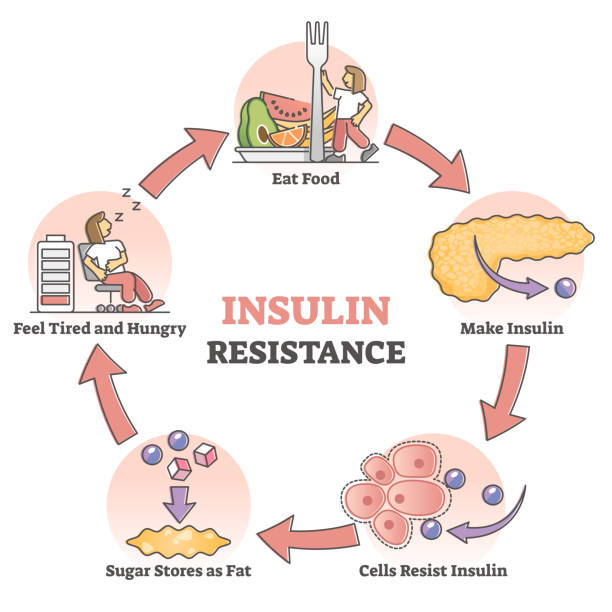Make an Appointment
Insulin, a hormone that the pancreas makes, allows cells to absorb and use glucose. In people who suffer from insulin resistance, the cells cannot use insulin effectively. Insulin resistance is when cells in your muscles, fat, and liver don’t respond well to insulin and can’t use glucose from your blood for energy. To make up for it, your pancreas makes more insulin. Over time, your blood sugar levels go up. What is insulin resistance? What does it include? It includes a group of problems like obesity, high blood pressure, high cholesterol, and type 2 diabetes. You might also hear it called
metabolic syndrome
.
You can’t tell that you have insulin resistance by how you feel. You’ll need to get a blood test that checks your blood sugar levels. Likewise, you won’t know if you have most of the other conditions that are part of insulin resistance syndrome like high blood pressure, low “good” cholesterol levels, and high triglycerides without seeing your doctor. Some signs of insulin resistance include a waistline over 40 inches in men and 35 inches in women. Blood pressure readings of 130/80 or higher. A fasting glucose level over 100 mg/dL. A fasting triglyceride level over 150 mg/dL. A HDL cholesterol level under 40 mg/dL in men and 50 mg/dL in women. Patches of dark, velvety skin.
When the cells cannot absorb glucose, or blood sugar, their levels build up in the blood. If glucose levels are higher than usual but not high enough to indicate diabetes, doctors call this pre-diabetes. Pre-diabetes often occurs in people with high insulin resistance. In this article, we look at the current understanding of insulin resistance and its role as a risk factor for diabetes and other conditions. We also describe the signs and symptoms of insulin resistance and ways to avoid it.
Things that can make this condition more likely include obesity, especially belly fat. Inactive lifestyle. Diet high in carbohydrates. Gestational diabetes. Health conditions like non-alcoholic fatty liver disease and polycystic ovary syndrome. A family history of diabetes. Smoking. Hormonal disorders like Cushing’s syndrome and acromegaly. Medications like steroids, antipsychotics, and HIV medications. Sleep problems like sleep apnea.
You can take steps to reverse insulin resistance. Exercise. Go for at least 30 minutes a day of moderate activity like brisk walking. If you’re not active now, work up to that. Get to a healthy weight. If you’re not sure what you should weigh or how to reach a weight loss goal, ask your doctor. You may also want to talk with a nutritionist and a certified personal trainer. Eat a healthy diet that includes fruits, vegetables, whole grains, nuts, beans, fish, legumes, and other lean proteins. Take medications. Your doctor may prescribe a medication called metformin to help keep your blood sugar in check. If metabolic syndrome goes untreated, it could lead to severe high blood, sugar, severely low blood sugar, heart attack, stroke, kidney disease, eye problems, cancer and Alzheimer’s disease.


4 Comments
Pingback: Why is low blood sugar dangerous? | Sujata Birla Hospital
Pingback: Why is low blood sugar dangerous? – Sujata Birla Hospital
Pingback: Benefits of Dark Chocolate | Birla Healthcare
Pingback: Health Benefits of Cottage Cheese (Paneer) | Yash Birla Healthcare